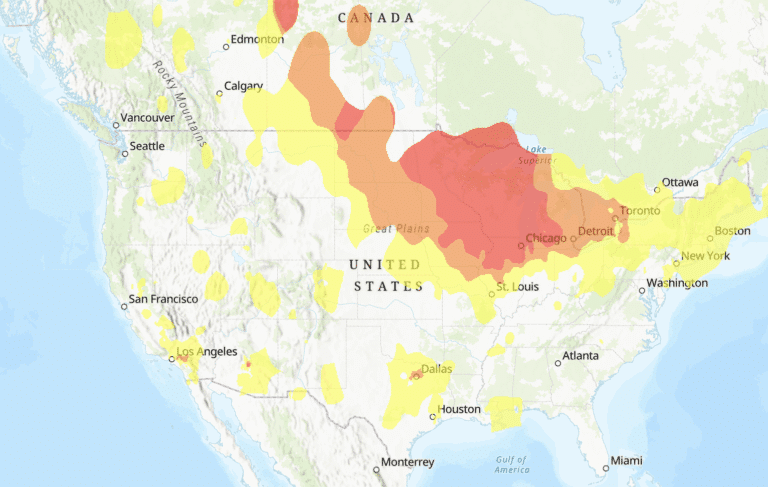By Heidi Godman, Harvard Health Blog
The steady stream of reports about foodborne illness is making me think twice about what’s on my dinner plate. This year alone, we’ve seen dozens of food recalls, including one involving frozen tuna that was linked to 62 cases of Salmonella infection, and another that implicated ice cream in 10 cases of Listeria infection — and three deaths.
Foodborne illness sickens 48 million people annually, sending 128,000 to the hospital and killing 3,000. You can get a foodborne illness from red meat, poultry, fish, eggs, dairy foods, and even fruits and vegetables. Bacteria in the Salmonella family are culprit No. 1; other foodborne microbes that can cause illness include Clostridium perfringens, the Campylobacter species, Staphylococcus aureus, E. coli O157:H7, Listeria monocytogenes, Toxoplasma gondii, and noroviruses.
TESTING CHALLENGES
Inspectors from the U.S. Food and Drug Administration and the U.S. Department of Agriculture routinely test for foodborne illnesses in both their own samples taken from the food supply and samples sent to their labs by food makers. Unfortunately, it takes weeks to detect Salmonella. That means potentially contaminated foods may be on their way to your store before anyone knows whether they contain bugs that can make you sick.
So I was encouraged to hear about this year’s FDA Food Safety Challenge, a competition for developing breakthrough methods that will make it easier to find foodborne microbes — especially Salmonella — in food. Purdue University researchers walked away with the $300,000 grand prize for their new method that would dramatically shorten the time it takes to test for Salmonella.
NOT SOON ENOUGH
While faster ways to detect microbes in food are a step in the right direction, we need to take action at home right now. Foodborne illness is a real threat in everyone’s kitchen. Studies have shown that half of the U.S. supply of meat and poultry is contaminated with potentially harmful microbes.
That’s no surprise to Dr. Richard Raymond, a former USDA Undersecretary for Food Safety.
“Raw meat is not considered sterile. There’s no way to pasteurize meat the way we can pasteurize milk,” he said. Ironically, he’d been up to his elbows in raw hamburger meat preparing dinner when I reached him at his Colorado home. We talked for a little bit about how USDA inspectors are present every day in every meat plant in the country.
“But if one contaminated chicken goes through a machine, then the machine gets contaminated, and all the other chickens that come through will be contaminated until it’s discovered and the equipment can be cleaned.”
WHAT YOU CAN DO
It’s important to remember that all fresh foods contain at least low levels of potentially harmful microbes. Ingesting small amounts of them isn’t a problem for most healthy people.
Cooking usually kills most germs, although the toxins that some produce can cause food poisoning — not infection — and leave you with a bad case of vomiting and diarrhea for a day or so.
“It’s the preparation, handling, and storage of food that often leads to more serious infection — and hospitalization — because live microbes have been ingested,” says Dr. David Bellinger, a Harvard Medical School professor and a member of the World Health Organization’s Foodborne Disease Burden Epidemiology Reference Group.
For example, if juices from meat you’re preparing get on a counter, and you touch that spot on the counter after dinner, you may pick up a microbe that you later ingest.
Here are some steps you can take to prevent foodborne illness:
Food handling
–Wash your hands thoroughly before and after you prepare food, before you eat, and after you use the bathroom.
–Keep raw meat, poultry, seafood, and eggs away from other foods in your grocery cart, and put them in plastic bags to keep juices from getting onto other foods.
–Don’t put eggs in your cart until you’ve opened the carton and made sure they’re free of dirt and cracks.
Food preparation
–Wash all fruits, vegetables, poultry, fish, and meats. Use a forceful stream of clean water to blast off surface bacteria and rinse off chemicals.
–To cut down on cross-contamination, use plates, cutting boards, and utensils for only one raw food at a time, and then wash them with soap and water before switching to another food.
–Clean all surfaces that come in contact with raw meat and seafood. “People think that dangerous pathogens can’t live very long on surfaces, but the recent data suggest that they can remain for days,” says Dr. Bellinger.
–Use a meat thermometer to make sure internal temperatures get high enough to kill germs — at least
Storage
–Don’t leave food out at room temperature for more than two hours, or more than one hour if the room temperature is 90 F or higher. After two hours, harmful bacteria can fester and multiply. That means you should be mindful of food that’s been on a buffet or picnic table too long.
–Refrigerate foods within one or two hours, and keep your refrigerator at a frosty 40 F or lower.
–Dump leftovers after a few days.
–When reheating foods, make sure they’re piping hot (steaming) before you eat them.
–Don’t eat food that looks, smells, or tastes funny.
These steps won’t take bacteria out of our food supply, but they will help us ward off the bugs that can make us sick. It’s a winning strategy, with the prize of good health.
(Heidi Godman is Executive Editor of the Harvard Health Letter.)














